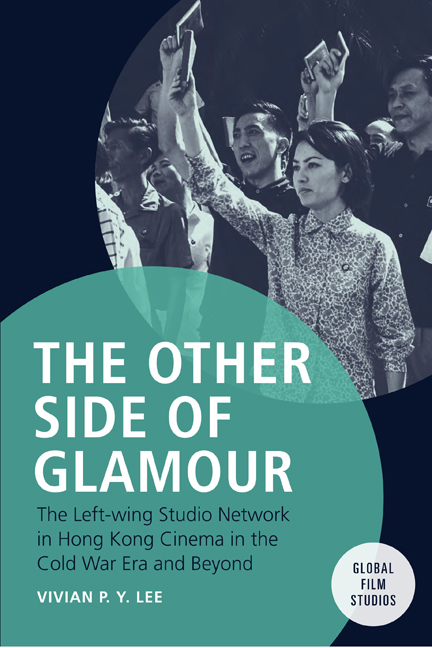 The Other Side of Glamour
The Other Side of Glamour Book contents
- Frontmatter
- Cotents
- List of Figures
- Acknowledgments
- A Note on the Timeline
- Timeline
- Dedication
- 1 Introduction
- 1 The Left-Wing Film Apparatus in Postwar Hong Kong
- 2 Left in the Right Way: Corporate Strategy and the Making of a Popular left-wing
- 3 Remaking Cantonese Film Culture: Union and Sun Luen
- 4 Class, Gender, and Modern Womanhood: Feng Huang and Great Wall
- 5 Corporate Repositioning, Transnational Cultural Brokerage, and Soft Power: Sil-Metropole
- 6 Critical Transitions on the Non-Left: Patrick Lung and Cecile Tang
- 7 From Political Alibis to Creative Incubators: the Left-Wing Film network since the 1980s
- Epilogue
- Bibliography
- Filmography
- Index
Epilogue
Published online by Cambridge University Press: 17 September 2020
- Frontmatter
- Cotents
- List of Figures
- Acknowledgments
- A Note on the Timeline
- Timeline
- Dedication
- 1 Introduction
- 1 The Left-Wing Film Apparatus in Postwar Hong Kong
- 2 Left in the Right Way: Corporate Strategy and the Making of a Popular left-wing
- 3 Remaking Cantonese Film Culture: Union and Sun Luen
- 4 Class, Gender, and Modern Womanhood: Feng Huang and Great Wall
- 5 Corporate Repositioning, Transnational Cultural Brokerage, and Soft Power: Sil-Metropole
- 6 Critical Transitions on the Non-Left: Patrick Lung and Cecile Tang
- 7 From Political Alibis to Creative Incubators: the Left-Wing Film network since the 1980s
- Epilogue
- Bibliography
- Filmography
- Index
Summary
As a new world political order began to take shape in the wake of the Second World War, an intense interstate ideological batt le was staged in Hong Kong, a British colony at the southern tip of the Chinese Mainland. Fought between two main protagonists, Nationalist Taiwan and Communist China, this batt le would define the special character of the Cold War in this ex-colonial city. This book poses a set of questions that seek to unpack the meaning of “being on the left “ in the cultural realm during the turbulent decades after the Second World War. Despite the fact that the terms “leftist” and “left-wing” in Hong Kong refer to a political identity founded upon one's support of the ruling regime in Mainland China, the concrete manifestations of the cultural left in Hong Kong was (and still is) more varied, ranging from being vocal party mouthpieces (such as Ta Kung Pao and Wenhui Pao) to progressive yet politically neutral or disinterested individuals. As such, “being on the left “ of the filmmaking world encompasses not only political affiliation or conviction alone but also the processes of infrastructural and systemic construction that formed the basis of the production, distribution, and exhibition of left-wing films in and through Hong Kong. From this perspective, the inquiry into “being on the left “ in the context of Hong Kong cinema in the Cold War era has sought to uncover the processes and the underlying causes and intentions (or the “how” and “why”) behind overlapping lines of events and occurrences in reconstructing the history of the left-wing studios and their affiliated industry partners and collaborators. As such, this study has argued for a “middle ground” positioning of the cinematic left, and considers how this positioning has become deeply ingrained in the film industry, if not the field of cultural production, in Hong Kong up until today.
- Type
- Chapter
- Information
- The Other Side of GlamourThe Left-wing Studio Network in Hong Kong Cinema in the Cold War Era and Beyond, pp. 150 - 156Publisher: Edinburgh University PressPrint publication year: 2020
